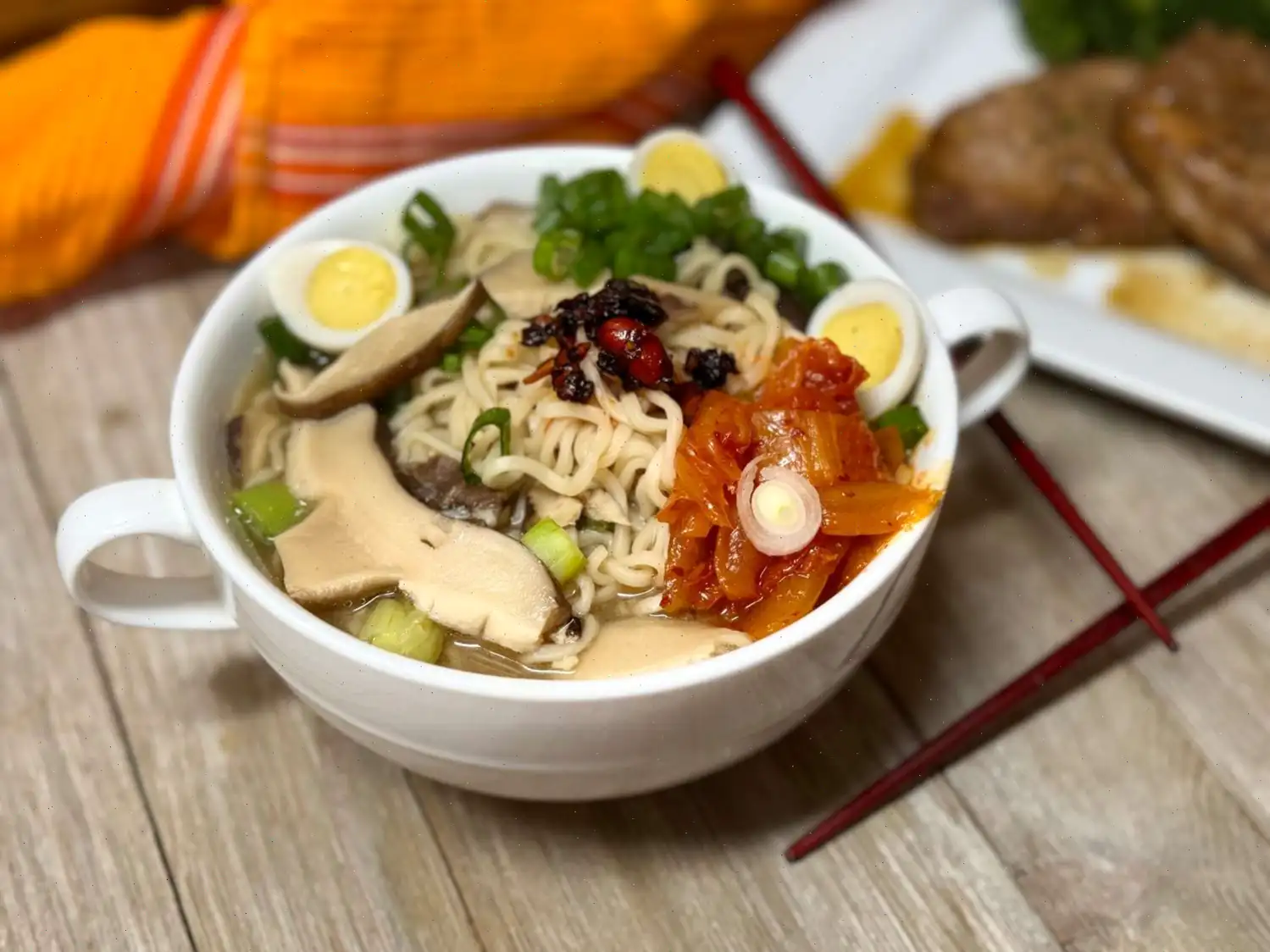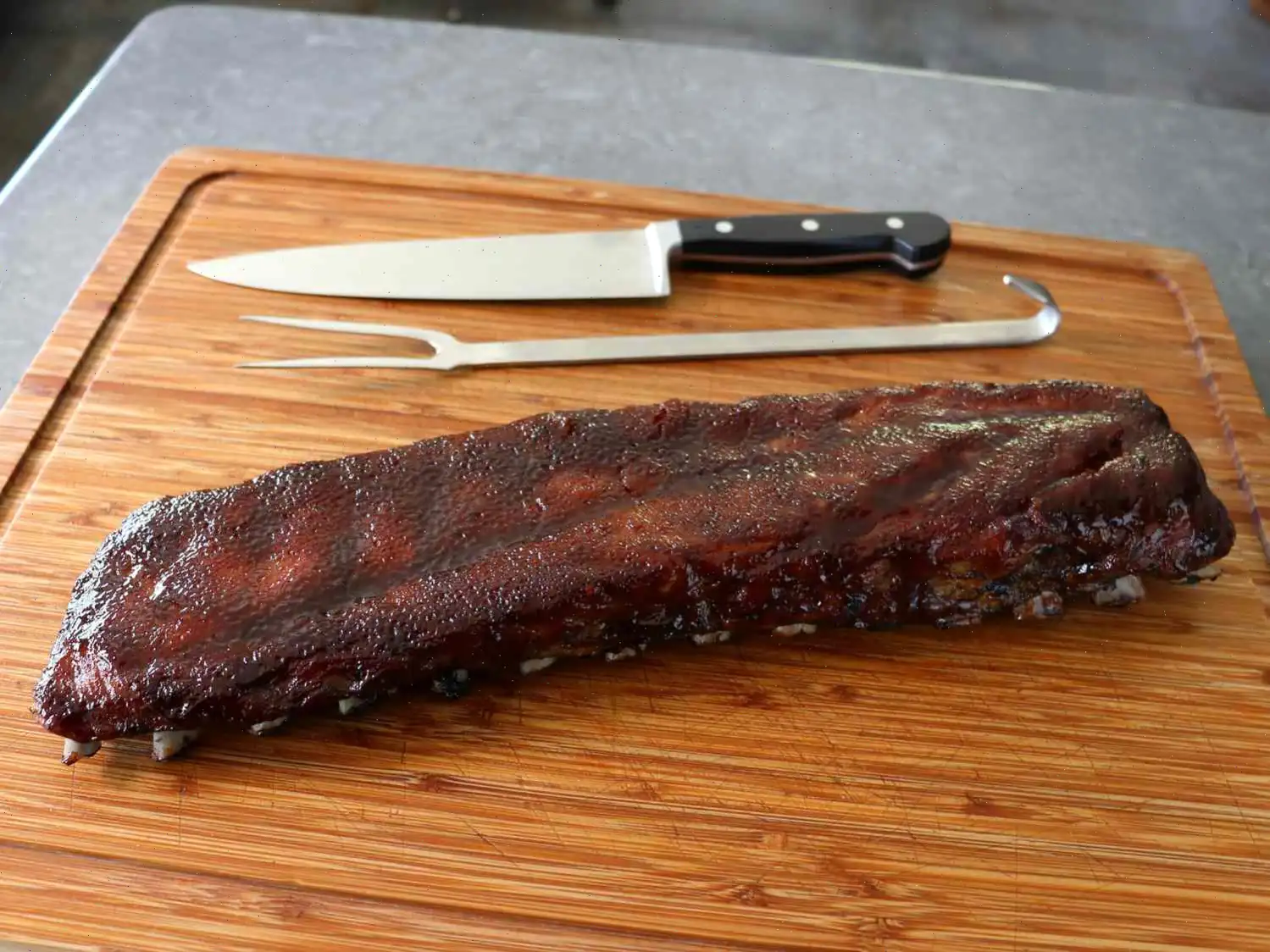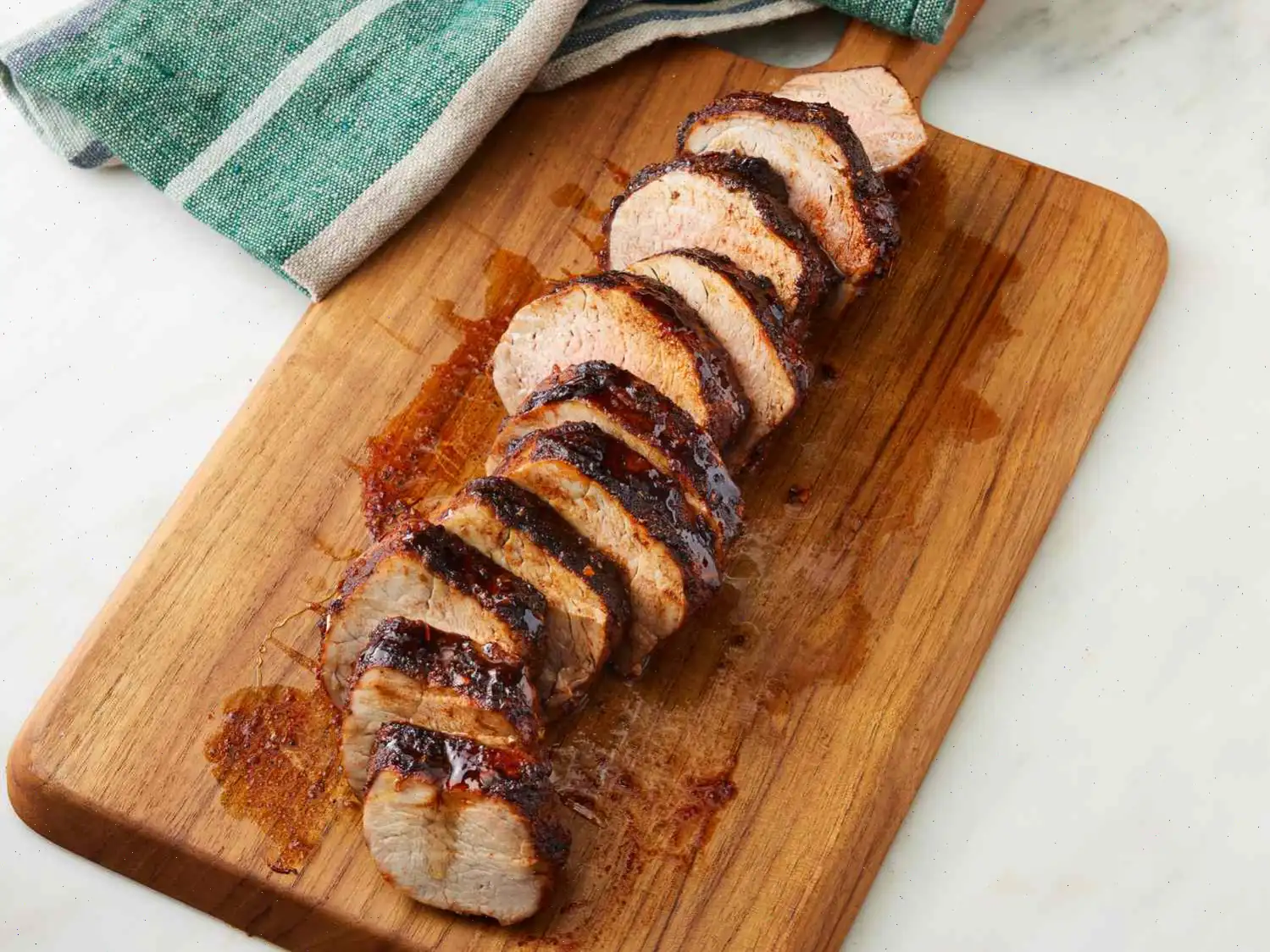
Mushroom Ramen Recipe
This recipe was originally created for four servings. Ingredient quantities are scaled automatically if you adjust the yield, but preparation steps and cooking time remain the same. Keep in mind that not every recipe adapts perfectly when scaled.
Ingredients
- 8 cups water
- 2 cups dried shiitake mushrooms
- 1 tablespoon white miso paste
- 2 teaspoons soy sauce
- 2 teaspoons rice wine vinegar
- 1 garlic clove, minced
- 1/2 teaspoon ginger paste
- 2 packages instant ramen noodles (3.5 oz each), seasoning discarded
Directions
- In a large pot, combine water, shiitake mushrooms, miso paste, soy sauce, vinegar, garlic, and ginger. Bring everything to a gentle boil.
- Lower the heat and let the broth simmer for about 25 minutes, allowing the flavors to deepen.
- Add the ramen noodles to the pot. Submerge them fully into the broth until they soften and no longer float on top.
- Cook for 5 minutes, then ladle the soup into bowls. Add your favorite toppings before serving.
Nutrition Facts (per serving)
Servings: 4
- Calories: 382
- Total Fat: 3g (4% DV)
- Saturated Fat: 1g (4% DV)
- Cholesterol: 0mg (0% DV)
- Sodium: 482mg (21% DV)
- Total Carbohydrates: 92g (33% DV)
- Dietary Fiber: 14g (49% DV)
- Total Sugars: 3g
- Protein: 13g (25% DV)
- Vitamin C: 4mg (5% DV)
- Calcium: 33mg (3% DV)
- Iron: 2mg (13% DV)
- Potassium: 1772mg (38% DV)
* Percent Daily Values are based on a 2,000 calorie diet. Your daily values may be higher or lower depending on your individual needs.
** Nutrient details may vary for certain ingredients. If you have specific dietary restrictions, please consult a healthcare professional before preparing this dish.
The History and Origins of Mushroom Ramen
Mushroom ramen, a comforting and flavorful variation of traditional Japanese ramen, has its roots in the broader history of noodle soups in Japan. Ramen itself was introduced to Japan from China in the early 20th century, quickly evolving into a uniquely Japanese culinary phenomenon. While classic ramen often relies on pork or chicken-based broths, mushroom ramen highlights plant-based ingredients, especially dried shiitake mushrooms, which are prized for their umami-rich flavor. This version emerged as part of Japan's modern adaptation to vegetarian diets, combining traditional techniques with locally available ingredients.
Regional Characteristics
Ramen is highly regional in Japan, with each area adding its own distinctive twist. In eastern Japan, especially Tokyo, the broth tends to be soy sauce-based and lighter, while in the Kansai region, miso or salt-based broths are more common. Mushroom ramen often reflects these regional nuances. In Hokkaido, for instance, miso mushroom ramen is popular, featuring a creamy, rich broth enhanced by the earthy depth of local mushrooms. The type of mushroom used, whether shiitake, enoki, or maitake, can also vary depending on seasonal availability and regional culinary preferences.
Differences from Similar Dishes
Unlike tonkotsu or shoyu ramen, which rely on meat-based stocks, mushroom ramen emphasizes the natural umami of fungi. This gives the soup a deep, savory flavor without the heaviness of animal fat. It also distinguishes itself from other vegetarian noodle soups by its layered approach: mushrooms are often rehydrated in the broth itself, infusing it with complexity that instant seasoning packets cannot replicate. Compared to miso soup, which can sometimes be light and simple, mushroom ramen is hearty and substantial enough to serve as a complete meal.
Typical Serving Context
Mushroom ramen is commonly served in casual ramen shops across Japan and increasingly in global urban centers that celebrate Asian cuisine. It is often presented in large bowls topped with optional ingredients such as soft-boiled eggs, green onions, kimchi, or chili oil. At home, it is favored as a quick yet satisfying dinner, particularly for those seeking a vegetarian alternative to traditional ramen. Many modern cafes and restaurants also pair mushroom ramen with side dishes like gyoza or pickled vegetables, enhancing its role as a full dining experience.
Interesting Facts
- The umami flavor from shiitake mushrooms comes from natural compounds called glutamates, which enhance the taste without added MSG.
- Mushroom ramen has become a staple in plant-based and vegan cuisine, reflecting the growing global trend towards meatless diets.
- In Japan, some gourmet chefs age their mushroom broths for several hours to deepen the flavor, similar to how traditional ramen stocks are prepared.
- Instant ramen packets are often discarded in homemade mushroom ramen recipes, highlighting the dish's focus on natural, fresh flavors over artificial seasoning.
- The dish is celebrated for its versatility: by changing mushrooms or broth bases, one can create a wide variety of flavor profiles suitable for any season.








